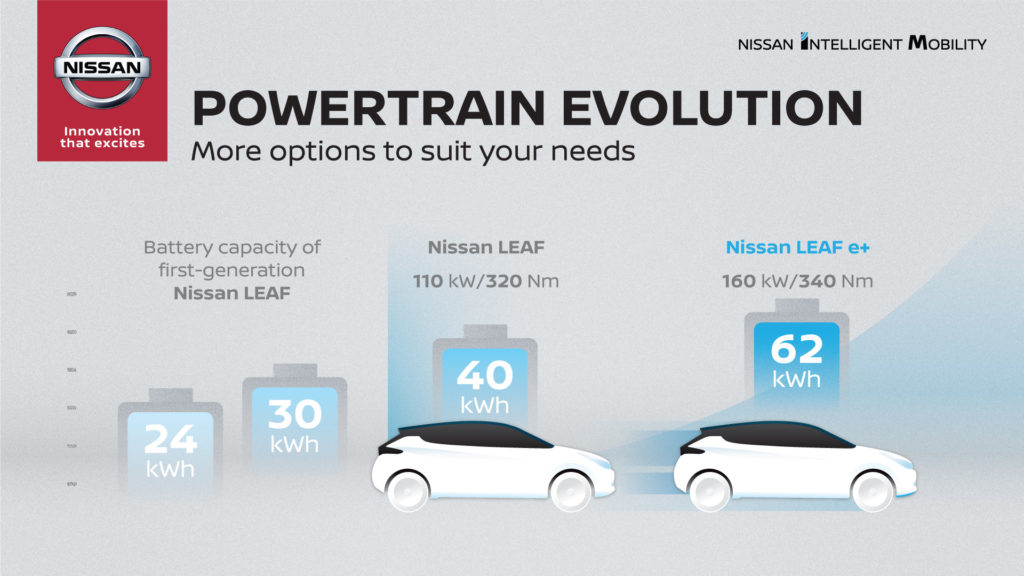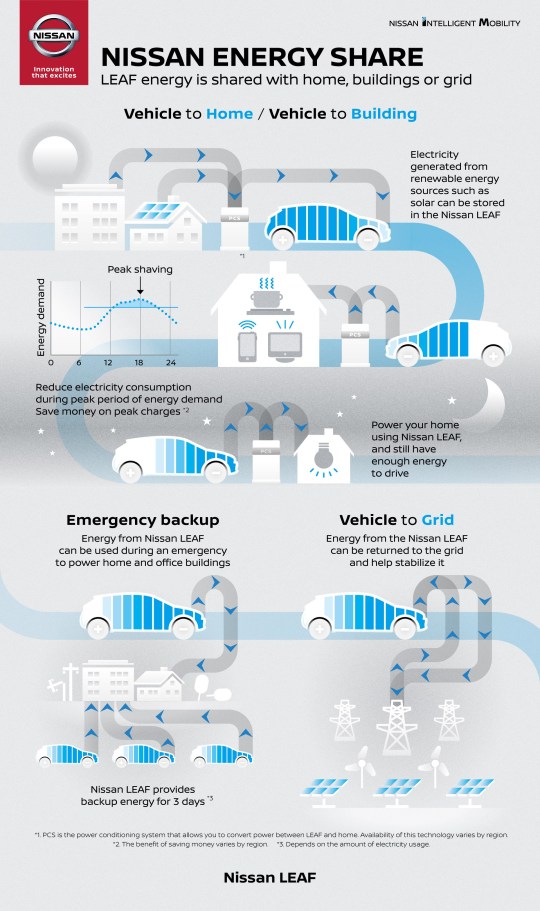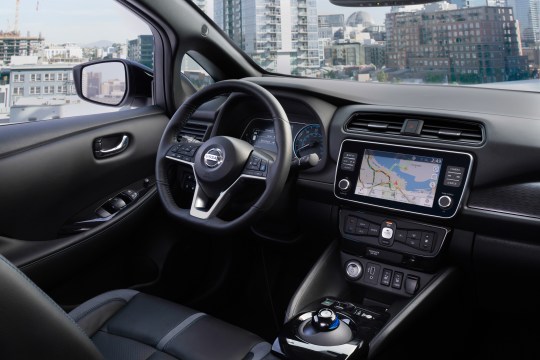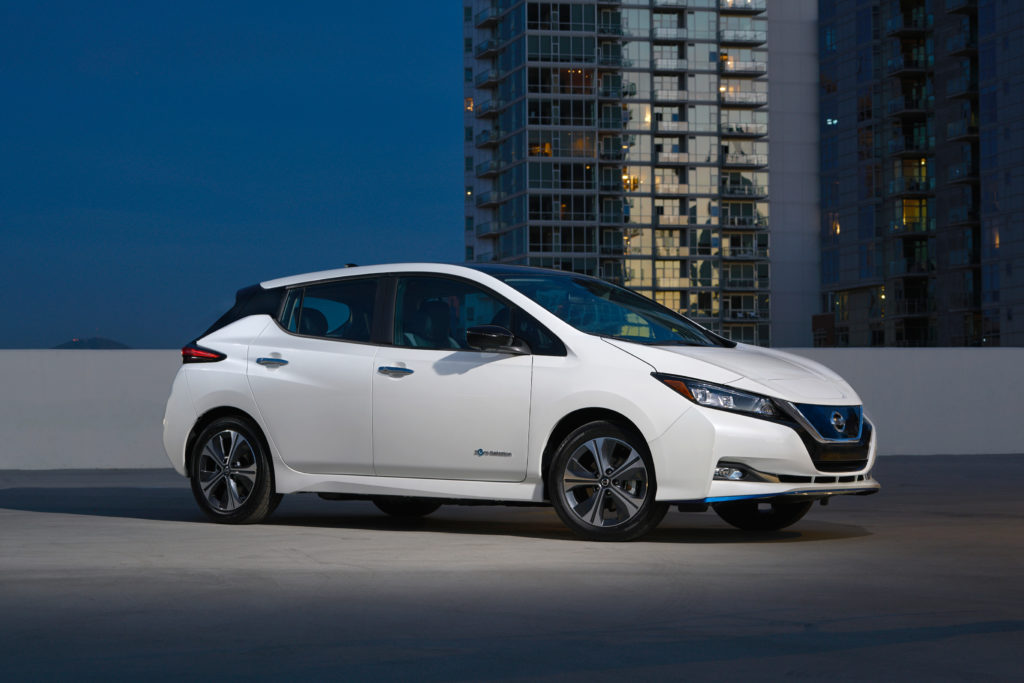Nissan unveiled at this week’s CES the Leaf e+, the latest addition to the popular and fully-electric Leaf lineup that sports a bigger battery for longer range as well as enhanced power output and faster charging. The Leaf was the first mass-market EV of the century in when it launched in 2011, and Nissan to date has sold more than 380,000 Leafs globally and 128,000 in the U.S.
Extended Range Matches the Competition
The Leaf e+ is a welcome addition to the Leaf lineup as the nameplate’s sales trajectory has declined in the face of competition from moderately-priced fully electric competitors with considerably longer ranges. For example, the Chevrolet Bolt and the Tesla Model 3, both of which are also fully-electric, have approximately double the range of the prior Leafs.
Enter the Leaf e+. With a 62 kWh battery pack (EPA-estimated range of up to 226 miles) and enhanced power output (160 kW motor in the LEAF e+ combine to produce 45 percent more power over prior Leafs and 250 lb-ft (340 Nm) of torque), the Leaf e+ is now a real contender against the Bolt (60 kWh battery, 238 EPA-rated miles, 150 kW motor, 266 lb-feet (360 Nm) torque) and Model 3 Mid-Range (62 kWh, 260 EPA-rated miles, power TBA).

Keeping in mind the importance of maximizing cabin and storage space, the new battery imposes no sacrifices. Even with a 25 percent increase in energy density and the increase in energy storage capacity, the LEAF e+ battery pack is almost the same size and configuration as the pack in the prior Nissan Leaf. Other than a 5-millimeter increase in overall height (16-inch wheels), the car’s exterior and interior dimensions are unchanged.
Faster Charging
Just as important as the extended range is the new Leaf’s 70 kW (100 kW peak) CHAdeMO Direct Current (DC) fast charging system. This means the Leaf e+ can charge up to twice as fast as previous generation Leafs, which peaked at 50 kW. The CHAdeMo port is pictured below, on the left, which is next to the universal Level 2 port.

Based on early testing, according to Nissan, Leaf e+ owners can expect similar charging times when hooked up to a 100 kW charger as current LEAF owners do with a 50 kW charger, despite a 55 percent larger battery storage capacity. Most non-Tesla DC fast chargers installed in the U.S. today offer a peak charge of 50 kW, but network operators such as EVgo and Electrify America are planning now for more powerful chargers to serve the new Leaf and other fast-charging EVs.
Nissan Energy Services and Grid Integration
The Leaf family of cars plays a vital role in Nissan’s efforts to integrate electric vehicles and energy systems into customer’s lives – creating an “EV ecosystem.” Among these efforts is Nissan Energy, the company’s initiative for its electric vehicles to connect with energy systems to charge their batteries, power homes and businesses, or feed energy back to power grids, as well as new efforts to reuse batteries.
“Nissan Energy will enable our customers to use their electric cars for much more than just driving – now they can be used in nearly every aspect of the customer’s lives,” said executive vice president Daniele Schillaci, Nissan’s global head of marketing, sales and electric vehicles. “Our Nissan Intelligent Mobility vision calls for changing how cars are integrated with society, and Nissan Energy turns that vision into reality.”

While many of the two-way services (“Vehicle to Grid” or V2G) are not yet widely available in the U.S., the desire for them among customers, policymakers, energy services companies and energy suppliers is great.
In the meantime, there is much interest in harnessing the ability to modulate vehicles’ rates of charge in real-time to respond to grid conditions. Because this service does not actually put power back onto the grid it is not true V2G, but instead is referred to as V1G. V1G can be extremely meaningful at scale as a demand response resource. For example, reducing the load of 1,000 EVs by a mere 2 kW each shaves two megawatts from the bulk power system. Similar adjustments can be made at the distribution level, thereby potentially avoiding costly upgrades, based on time, price, load, and parameters provided by customers.
Technology
The Leaf e+ contains many of Nissan’s advanced technologies including ProPILOT Assist semi-autonomous driving system and e-Pedal mode for one-pedal driving, both of which are common among electric vehicles.
“The new Nissan LEAF e+ offers all of the style, convenience and electric vehicle benefits that have helped make Leaf the best-selling electric vehicle in the world, plus even more driving excitement, range, power and choice,” said Denis Le Vot, senior vice president and chairman, Nissan North America. “Nissan Intelligent Mobility is at the core of everything we do and the new Nissan LEAF e+ takes this vision even further,” Le Vot continued. “EVs will play a significant part in our product lineup as we move forward and will lead the way to providing an efficient and sustainable future for the world.”

Availability and Pricing
Leaf e+ sales in the U.S. are expected to begin in the spring of 2019, with pricing to be announced closer to the sales-date.
Conclusion
For more information about electric vehicles and electric vehicle charging, please contact me via my website or LinkedIn. I also invite you to subscribe to receive future posts via email, view my other posts, and follow me on Twitter.

